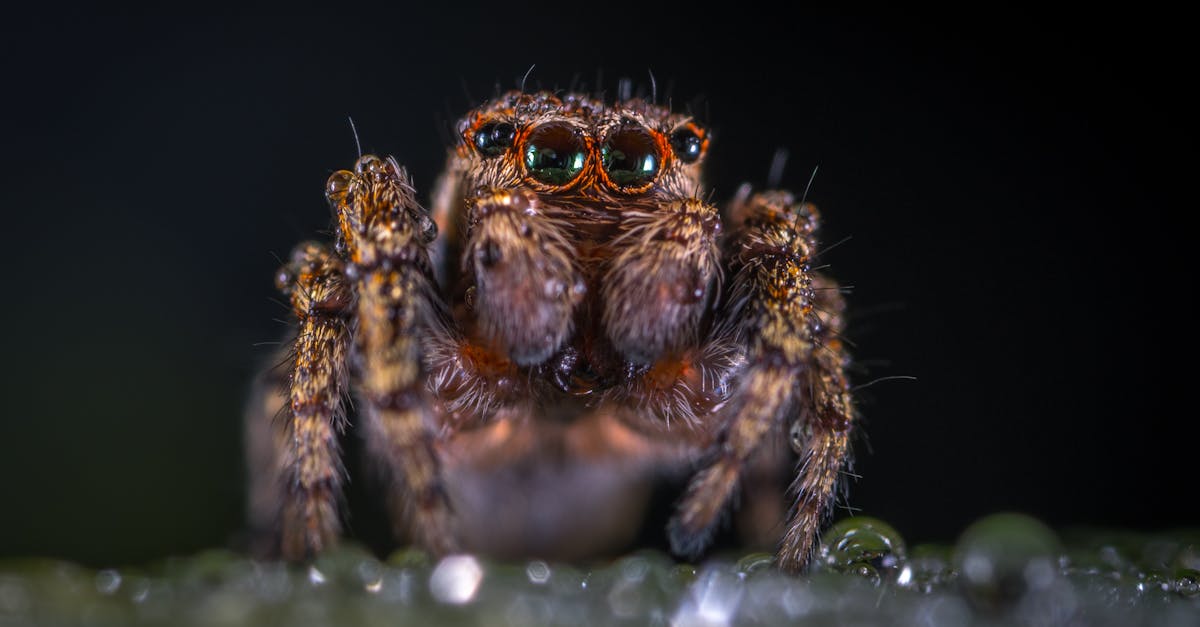How to Get Rid of Bugs in Your Swimming Pool
To get rid of bugs in your pool, start by maintaining proper chlorine levels and water circulation, and use a pool cover when not in use. For midges, place lights away from the pool and trim surrounding grass. Daily, empty the catch-net before turning off the filtration system to prevent bugs from escaping. Eliminate food sources by controlling algae and removing small bugs with a dip-net. As a temporary fix, add dish detergent near a light to attract and kill bugs.
Read MoreNotoriously Tiny Predators
Bed bugs, scientifically named Cimex lectularius, are tiny, slow-moving pests found globally. They resemble mites and are often deep brown, though some may appear white. These wingless insects feed on blood, becoming bloated and dark after meals. Despite their size, bed bugs are resilient and can live over a year without feeding. They hide in crevices and emerge at night to feed on unsuspecting hosts. Females can lay up to 300 eggs, making them prolific reproducers. Knowing their characteristics and habits helps in effectively managing and preventing infestations.
Read MoreGet to Know Bed Bugs Physically
Bed bugs, notorious pests from the 19th to early 20th century, made a comeback in the US post-World War II through travelers' baggage. These tiny, wingless insects can grow up to a fourth of an inch and vary in color from deep brown to burnt orange or light tan. They feed on blood, appearing bloated and darker after meals. Bed bugs are difficult to spot due to their size and hiding habits. Effective extermination requires professional pest control, as DIY methods often repel rather than kill them, potentially spreading the infestation to other areas.
Read MoreWhat are Bed Bugs?
Bed bugs, scientifically known as Cimex lectularius, are small, blood-feeding insects that cause itchy bites. They are resilient pests that are hard to exterminate and can appear deep brown or white, depending on the region. Bed bugs use tiny beaks to pierce the skin and suck blood, but they do not transmit diseases. Effective extermination involves professional pest control, while prevention includes maintaining cleanliness and being cautious when traveling. Ensuring a bug-free environment can help avoid waking up with itchy bites.
Read MoreTV and Bed Bugs
TV shows have featured bed bugs due to their annoying nature, despite their lack of disease transmission. While animated shows may anthropomorphize them, documentaries provide educational content on managing infestations. Bed bugs, scientifically known as Cimex lectularius, are small, wingless parasites that feed on blood from humans and pets. Although TV often portrays them in exaggerated or humorous ways, serious documentaries offer valuable insights into dealing with bed bugs and maintaining cleanliness. As bed bugs become more common, these educational shows highlight the importance of awareness and proper pest control.
Read MoreSaying Good Bye to Bed Bugs
Saying goodbye to bed bugs requires a strategic approach since they are persistent and difficult to eliminate with just physical or chemical methods. Bed bugs do not transmit diseases but their bites can cause irritation and allergic reactions. To effectively tackle an infestation, consult professionals and be prepared to discard or properly handle infested items. Maintaining cleanliness, checking accommodations while traveling, and seeking regular pest control advice can help prevent future infestations. Proper hygiene and informed actions are crucial in managing and preventing bed bug problems.
Read MoreBed Bugs and Las Vegas
Las Vegas, renowned for its vibrant entertainment and casinos, is not immune to bed bug infestations despite its glamorous reputation. These pests are tenacious and can easily infiltrate small cracks, making them difficult to eliminate with simple cleaning or insecticides. While bed bugs in Las Vegas don’t transmit diseases, their bites can cause significant discomfort, including itching and skin irritation, which can lead to allergic reactions in some individuals. To effectively manage a bed bug problem in Las Vegas, professional pest control services are recommended to handle the issue comprehensively.
Read MoreA Rainbow Shot Against Bed Bugs
Bed bug infestations are challenging to tackle, as these resilient pests often hide in bed crevices and can survive for long periods without feeding. Effective eradication involves not only cleaning with a vacuum but also using specialized equipment. The Rainbow vacuum cleaner, introduced in 1955 by Rexair LLC, is renowned for its powerful, bagless design and has evolved significantly over the years. It’s particularly useful for removing bed bugs and their eggs from various surfaces. After vacuuming, the bag should be sealed in plastic and disposed of outside to prevent reinfestation. While vacuuming alone isn’t a complete solution, it’s a crucial part of a comprehensive pest control strategy.
Read MoreVision of Bed Bugs
Bed bugs (Cimex lectularius) are tiny, flattened insects typically appearing deep brown but turning red or black after feeding on blood. They are difficult to see without magnification, but their images in textbooks and online reveal their complex, wax-coated skin that protects them from dehydration. Pesticides and insecticides, often containing powdered glass and silica, work by cutting through this protective layer, allowing chemicals to dehydrate and kill the bugs. For a closer look, mature bed bugs, which can reach about a quarter of an inch, may be easier to observe.
Read MoreControlling Bed Bugs and Other Pests
Pests, including resilient bed bugs, are a significant concern for agriculture and health due to their rapid reproduction and disease spread. Various pest control substances have been developed, such as Insect Growth Regulators (IGRs) that inhibit larvae and egg development, Contact Pesticides that kill pests instantly but are less effective long-term, and Insecticidal Dusts that penetrate and poison pests. Effective pest control requires thorough research and strategic application of these substances.
Read MoreNative Indian Remedies to Get Rid of Bed Bugs
Native Indian remedies for bed bugs were highly effective before WWII, but fell out of use with improved hygiene and widespread DDT usage. Bed bugs resurfaced in the U.S. due to international travel, poor hygiene, and pesticide resistance. Bed bugs (Cimex lectularius) are small, blood-feeding insects. Native remedies, based on careful observation of bed bug habits, were incorporated into modern treatments. Other regions lacked these traditional methods, contributing to persistent infestations.
Read MorePesticides to Get Rid of Bed Bugs
To control bed bugs, integrated pest management and professional pest control are essential. Common pesticides include contact insecticides, insect growth regulators (IGRs), and insecticidal dusts. Pyrethrins, Tempo, Allethrin, and Delta Dust are among the frequently used products. While effective, these substances can pose health risks, necessitating expert application. Preventative measures, such as maintaining hygiene and regular inspections, are crucial in managing bed bug infestations.
Read MoreHow to know if you have bed bugs
Identifying a bed bug infestation begins with understanding their appearance and behavior. Bed bugs are nocturnal, flat, oval-shaped insects about the size of an apple seed. While they're typically shy and avoid daylight, they may emit a sweet, musty odor. Common hiding spots include mattresses, bed linens, and nearby furniture. To confirm an infestation, inspect these areas for reddish-brown stains (bed bug excrement) and shed skins. Alternatively, wake up in the middle of the night and remain still; if bed bugs are present, they may crawl towards you, retreat when disturbed, then return to feed. This method can help confirm the presence of bed bugs.
Read MoreMurdering or Exterminating Bed Bugs
If you're plagued by bed bugs, understanding your enemy is crucial before acting. These persistent, nocturnal insects can hide in tiny crevices, survive up to a year without feeding, and spread rapidly through luggage, with females laying up to 300 eggs per batch that hatch in 10 days. Effective extermination is challenging due to their elusive nature, so it's best to hire professional pest control experts who know the most efficient methods to eradicate these pests. Despite the Bible's commandment against killing, this is one battle worth fighting to reclaim your comfort.
Read MoreHow Many Eggs Do Bed Bugs Lie?
Bed bugs are small, nocturnal insects that feed on human blood and reproduce rapidly. A female bed bug can lay between 300 to 1,000 eggs in its lifetime, typically laying one to three eggs per day after mating. These eggs hatch in about ten days. Bed bug eggs are often found in protected crevices, such as under mattresses, in headboard cracks, and inside wallpaper. Detecting bed bug eggs involves looking for small, termite-like eggs near reddish-brown stains and a musty odor. Effective eradication of bed bug eggs requires insecticides specifically designed for bed bugs, as manually crushing the eggs may not eliminate them all.
Read MoreHow Do You Get Rid of Bed Bugs?
Getting rid of bed bugs involves various approaches, from manual removal to professional extermination. The simplest method is to capture and squash bed bugs manually, but this is impractical and tedious. Insecticides, including insecticidal dusts that destroy their protective coating, contact insecticides that repel and kill upon contact, and insect growth regulators that target young bed bugs and eggs, are more effective but have limitations. The most efficient and safest method is to hire professional pest control services, as they have the expertise and appropriate chemicals to eliminate bed bugs without posing risks to residents.
Read MoreBeware! Hotels Mau Have Bed Bugs
Bed bugs, once eradicated in the U.S., are making a comeback, often through infested hotels and motels. These pests can be found even in clean, high-end establishments, attracted by human hosts rather than filth. To detect them, inspect beds, furniture, and upholstery for signs like dark excrement lines and a musty odor. Prevent bringing bed bugs home by checking luggage carefully and using insect spray. Keep belongings in the bathroom, away from potential bed bug habitats.
Read MoreBitten By The Bug
Bed bugs have been a persistent problem for centuries, causing both psychological strain and physical discomfort. Although bed bug bites are painless and do not transmit diseases, they cause itching and inflammation, appearing as large red wheals that form an orderly pattern. Immediate treatment includes washing with soap and water and avoiding scratching to prevent infection. Herbal treatments, known for controlling infection and reducing itching, can be effective. Herbs such as plantain, mud poultices, and fresh-herb poultices made from plants like wild geranium, comfrey, and chickweed are commonly used. Chewable herbs like oak and maple leaves are safe and effective for soothing bed bug bites.
Read MoreAre There Herbs Used to Get Rid Of Bed Bugs?
While herbs are often used in modern pesticides, no specific herb is identified to repel bed bugs directly. Pest control firms use chemicals derived from herbs, which are harsh and effective. There are three main types of pesticides for bed bugs: insecticidal dusts that damage their protective coatings, contact insecticides that repel but may not fully eliminate them, and insect growth regulators (IGRs) that target young bed bugs and eggs to prevent new generations. Handling these chemicals should be left to pest control professionals to ensure safety and effectiveness.
Read MoreGood Night, Sleep Tight, Don't Let the Bed Bugs Bite
Bed bug bites cause itchiness and allergic reactions, making it difficult for both children and adults to sleep well. To confirm a bed bug infestation, look for symptoms such as oval-shaped bites in a line, red swollen wheals, and reddish-brown stains on mattresses and furniture. Bed bugs hide in crevices near sleeping areas, such as seams of mattresses, headboards, and wooden furniture. If you find signs of bed bugs, hire a professional exterminator and consider discarding infested items, as bed bugs can survive without feeding for up to 18 months and a single female can lay 300 eggs, leading to re-infestation.
Read MoreSay Good Bye to Bed Bugs
To get rid of bed bugs, first confirm their presence by checking for small, wingless creatures, red excretions, and bites on your skin. Use potent pesticides, though be aware of their dangers, or better yet, hire professional pest control experts who have the knowledge and equipment to handle infestations safely and effectively. Notify anyone who may be affected by the extermination process. Removing bed bugs is challenging, but essential for maintaining a comfortable living environment.
Read MoreGet the Bed Bugs Out of Your Clothes
To avoid bringing bed bugs home from travel, shake off your clothes the night before checkout and ensure your suitcase is bug-free by spraying it externally with an insecticide. Store your items in a clean, dry bathtub since bed bugs avoid ceramics. Have all clothes, clean and used, laundered in warm water for 20 minutes. Resist sleeping on hotel beds before leaving, and immediately soak all clothing in warm water upon returning home to prevent infestation. Following these steps is crucial to avoid a difficult and extensive extermination process.
Read MoreBed Bugs In Georgia
Bed bugs, scientifically known as Cimex lectularius, are tiny, flattened pests that closely resemble mites and have become a rapidly growing problem in Georgia. Effective extermination methods include professional pest control services, which are recommended over DIY insecticide use due to health risks and legal restrictions. Maintaining hygiene and cleanliness is crucial in preventing infestations, especially for frequent travelers who might inadvertently bring bed bugs home. Professional extermination, while requiring a financial outlay, is generally the most effective and practical solution for eradicating bed bugs and preventing their return.
Read MoreThe War On Exterminating Bed Bugs
Bed bugs, small blood-sucking pests, have become a serious issue in homes, offices, and luxury establishments due to increased travel and pesticide resistance. DDT effectively controlled them in the mid-20th century, but its ban allowed bed bugs to return. Modern extermination is thorough and tedious, involving professional insecticide use and precautionary measures like washing linens and sealing cracks. DIY methods can be hazardous, so professional help is recommended. Bed bug infestations affect various properties, and maintaining hygiene and professional pest control are crucial.
Read MoreDon't Let the Bed Bugs Bite
Bed bug bites can cause itchy and swollen rashes, especially problematic for children who may scratch and risk infection. Bed bugs are visible to the naked eye and resemble apple seeds in size and shape. To avoid infestation, regularly check furniture like sofas and beds for reddish-brown stains, a sign of bed bug presence. Infestations can lead to anxiety and insomnia, particularly for those sharing a bed with infants or small children. It's crucial to address infestations promptly by inspecting mattresses, headboards, and wooden panels for signs of bed bugs and taking appropriate measures to eliminate them.
Read More






















